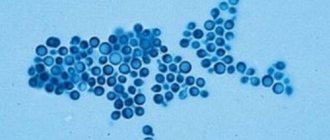Failure of a cat’s hind legs is most often provoked by serious illnesses or previous injuries that require immediate contact with a veterinary clinic. Even the slightest delay can lead to the death of the animal.
Gait disturbances, paralysis of the limbs and spinal injuries can only be cured by a specialist; it is impossible to relieve such conditions on your own. Failure to see a doctor in a timely manner increases the risk of complete loss of sensitivity and mobility of the paws. That is why, in order to avoid complications and return the animal to a confident gait, at the first manifestations of paralysis, you should take the animal to the veterinarian.
Failure of a cat's hind legs: causes of a dangerous condition
Impaired mobility of an animal's limbs can be caused by various reasons. It is very difficult for the owner to independently understand what caused the paralysis, so in this case it will not be possible to do without a trip to the veterinarian.
Failure of a cat's hind legs can be caused by:
- Spinal injuries. Limbs often lose mobility as a result of spinal column injuries. Trauma to the lumbar region especially often leads to such consequences. Animals with access to the outdoors are susceptible to similar injuries. They may be run over by a vehicle or fall from a height or jump awkwardly from a tree. Apartment pets also get injured when jumping from a closet or windowsill. Problems with the limbs are indicated by immobility of the hind legs, tail and general weakness.
- Thrombosis of the femoral arteries. Thromboembolism of the femoral arteries leads to loss of sensation in the limbs, which develops gradually. During its development, the animal experiences severe pain in the lower back, screams and behaves restlessly. If you do not show your pet to a doctor in a timely manner, tissue necrosis will begin and it will be impossible to restore the mobility of the hind legs. In addition, after a few days, thrombosis will lead to death.
- Tick bite. Tick bites, although rare, cause paralysis, leading to the death of the animal. After a tick bite, the animal becomes agitated, followed by weakness, apathy, trembling and paralysis. If action is not taken in time, death occurs.
- Inflammation of the spinal fluid. Myelitis develops against the background of infectious diseases, helminthic infestations, injuries and poisoning. The pathology is characterized by failure of the cat's hind legs, chaotic movements, elevated temperatures, upset stomach, diarrhea and urinary incontinence. Timely treatment will lead to relief of the disease and complete restoration of the mobility of the pet’s limbs.
- Hip dysplasia. With this pathology, bone formation is disrupted. The disease primarily affects large breed cats. The disease leads to the development of severe pain when walking and jumping. If the owner does not provide supportive treatment, this will lead to limb failure.
- Stroke. A cat's hind legs may also fail due to a stroke. The disease can affect both older and young animals as a result of poor nutrition or a sedentary lifestyle. When the cerebral vessels are blocked, paralysis of the limbs develops. Timely treatment, which should begin immediately after diagnosis, will help eliminate it.
- Heart failure. If the cardiovascular system does not work properly, the animal's limbs may fail. This occurs due to oxygen starvation, against the background of which muscle tissue atrophy develops. In addition, heart problems manifest themselves in shortness of breath, dry cough and lethargy.
Other pathologies also lead to loss of limb mobility, which can only be identified by a specialist after a complete examination of the sick cat.
Diagnosis of lameness
For the owner, any change in habitual behavior can be a reason to closely monitor the pet. We tend to think that lameness is easy to notice, but cats are special animals and this is not true for them. A limping cat can masterfully transfer its body weight to healthy limbs, and outwardly its movement will remain virtually unchanged. Therefore, the first signs of lameness can be considered changes in the cat’s activity:
- decreased activity, the cat sleeps more and plays less;
- lack of jumping activity, if they were there before;
- searching for shelter, a secluded place, previously not typical for a cat;
- deterioration in the condition of the coat due to difficulties with self-grooming - due to a sore paw or the inability to turn around, the cat may have difficulty grooming its coat.
In chronic pathologies, such symptoms can increase gradually, as a result of which the owner seems to think that everything is normal, sometimes this is associated with age-related changes. However, despite the seeming harmlessness, this is a reason to take your cat to the doctor and make sure that he is not in pain for any reason. If you see that your cat is limping, dragging its paws, placing them incorrectly, has an unsteady gait, or tremor (trembling) of its limbs, this is a reason to urgently consult a veterinarian.
The primary diagnosis of lameness consists of a physical examination by a doctor, taking a medical history, and conducting an orthopedic or neurological examination. Further diagnosis will depend on the results of the examination.
Symptoms characteristic of limb failure
Paresis of the limbs is represented by the following symptoms:
- complete or partial impairment of motor functions. The animal stops moving quickly, drags its paws or moves crawling;
- change in gait. If swaying and pulling up of the limbs is normal for a small kitten, then failure of the cat’s hind legs requires immediate intervention by a veterinarian;
- atrophy of the muscular system. The muscles of the hind limbs lose their elasticity;
- soreness when feeling the hind legs. The cat screams and struggles when the back of the body is probed;
- lack of sensitivity. The animal stops feeling cold and warmth with its paw pads.
If such symptoms appear, your pet should be taken to a veterinarian immediately.
First aid
If the owner notices a failure of the cat’s hind legs or problems with mobility, then before taking it to the veterinarian, he must provide first aid to the animal.
First you need to calm the pet and put it in a carrier or house. Then, if the hind paws are cold, you need to warm them up with a heating pad. After this, you need to immediately go to the veterinary clinic.
Why does the animal limp, although there are no visible injuries or obvious causes?
Sometimes it happens that a cat limps from time to time, but there are no visible signs, as well as obvious causes of lameness. In this situation, only a veterinarian can understand why the pet began to limp on the front or back leg. This may be due to diseases of the joints, bone tissue, neoplasms, problems with the spine, and the consequences of infections.
How to treat paresis of the lower extremities?
After delivering the cat to the veterinarian, the specialist conducts an examination, determines the degree of sensitivity of the hind limbs, takes an X-ray and ultrasound, and also takes the tailed patient’s blood and urine for analysis.
Therapy is prescribed only after an accurate diagnosis has been made. It includes medication, physiotherapy, massage, and sometimes surgery.
Operation for advanced cases
After receiving an injury, the dislocation must be corrected as soon as possible. Delay in receiving medical help leads to muscle contraction, the formation of a dense blood clot and scar tissue. These changes make it difficult to reduce the dislocation using a closed method. In such cases, the question arises about surgical treatment of advanced dislocations.
During the operation, during which the animal is asleep, an incision is made in the joint area, through which fibrin clots and destroyed parts of the joint are removed. The joint returns to its original position; this will require force or special levers. A joint reduced openly also requires fixation and temporary immobilization.
DETAILS: Biceps tear - SportWiki encyclopedia
Sometimes a cat requires surgical fixation of a joint:
- for dislocations of the hip or wrist joints, it is carried out using special pins;
- for elbow and ankle - screws and wires.
Congenital dislocations in furry pets are usually eliminated using the open method. After a minor dislocation, the animal recovers within 3-4 days. The cat can use its paw, but has a slight limp. Full recovery from severe dislocations takes about 3-4 weeks.
In the best case, the entire injury will be reduced to micro-tears of the ligament fibers and will not require specific treatment, you just need to provide the pet with rest and care. Connective tissues quickly regenerate and your pet will come to its senses within 2–3 days.
If you are “lucky” and the sprain is associated with a dislocation of a joint or a broken bone, you will need the help of a doctor, and immediately. The damaged bone is set, and a fixing bandage or plaster is applied to the limb.
Drug treatment
If paresis of the limbs is confirmed, appropriate drug therapy is selected for the cat. Depending on the disease that caused the paralysis, various drugs are used. They can be presented:
- antibiotics to relieve inflammation caused by infection;
- vitamins to strengthen the immune system;
- drugs that thin the blood for thrombosis and stroke;
- anti-mite drugs;
- diuretics.
The treatment regimen may differ depending on the underlying disease that caused the failure of the cat's hind legs.
Prevention
Lameness occurs during normal daily activities. Severe injuries such as falling from a height or being hit by a car can be avoided by keeping your cat indoors.
Cats should eat a carefully balanced diet to ensure a strong and healthy skeleton. If feeding homemade food, consult a veterinary nutritionist who can help you choose the right diet with all the necessary vitamins and minerals for your cat's health.
Avoid obesity in your pet.
At the first sign of lameness on the front legs, consult your veterinarian!
Sources
- https://gafki.ru/koshki/khromaet-na-zadnyuyu-lapu-bez-vidimykh-povrezhdeniy.html
- https://kinpet.ru/u-koshki-otnimayutsya-zadnie-lapy-naskolko-vse-serezno/
- https://vashipitomcy.ru/publ/zdorove/bolezni/khromota_u_koshki_osnovnye_prichiny_provocirujushhie_nedug/15-1-0-1998
- https://animashka.info/koshki-uhod/kotenok-ushib-lapku-hromaet.html
- https://zoostatus.ru/lechenie/simpromy/khromota-u-koshek/
- https://dr-pets.ru/stati/hromota-u-koshek-i-sobak.html
[collapse]
Physiotherapy
Recovery from limb paresis is very long and requires mandatory physiotherapeutic procedures.
To help your pet recover faster, veterinarians advise performing a number of exercises that will help restore neurological functions:
- Bike. To perform this exercise, the animal must be placed on its back and alternately perform circular movements with its hind legs for five minutes, simulating riding a bicycle.
- Paw massage. Every day, the owner must knead the cat’s paw pads and the paralyzed limbs themselves.
- Carding. A sick pet needs to be scratched in different places on the body. Progress will become noticeable when the cat, after the next “scratching”, begins to try to scratch itself with its hind paw.
- Rolling on the ball. To do this, take the cat and place it with its stomach on the ball, making sure that its limbs slightly touch the floor. In this position, the animal must be slowly rolled back and forth, holding it by the back.
- Support. You need to pass a wide strip of fabric under your pet's belly and walk with it around the room, holding the ends of the fabric.
- Moving the hind legs. To perform this exercise, you need to grab the animal by the hind legs and slowly move them, imitating walking.
- Swimming in the bathtub. This exercise is suitable for those cats who are not afraid of water. To perform this, the animal must be forced to swim in the bathtub every day, supported under the stomach and head so that it does not swallow water.
"Important! To speed up recovery, after a cat’s hind legs fail, it is necessary to work with it daily, devoting at least an hour a day to physical therapy.”
What can harm a pet?
In conclusion, I would like to remind pet owners that under no circumstances should they give their dogs or cats painkillers, especially from a human first aid kit, without a doctor’s prescription. This can cause irreparable harm to your pet's health! For example, an ibuprofen tablet can cause irreversible, fatal damage to a cat or small dog. You should also not use ointments or gels “for joints”. At best, they will be useless, since they are applied to the fur; at worst, they can cause burns or poisoning after licking the drug.
Remember, the sooner you see a specialist, the faster your pet can return to an active life without pain.
What are the consequences of failure of a cat's hind legs?
Failure of a cat's hind legs is a complex ailment that requires immediate treatment at a veterinary clinic. Self-medication of paresis is completely excluded, since it will not give any results and will only worsen the animal’s condition.
In the absence of proper drug treatment, paresis of the limbs can cause death, which will occur within a few days and will be extremely painful for the pet.
Home care
After surgery, you will need to maintain rest and restrictions for your pet. This can last for at least six weeks (for example, with fractures), and the restriction of mobility will cause protest in the cat. However, exercising too early or too heavily will lead to re-injury and make the problem worse. To limit mobility, a cage, playpen or separate room is used in which the cat does not have the opportunity to jump or climb.
If your cat has an external suture, it should be inspected daily for swelling, redness, or discharge. Stitches or staples should be removed 10 to 14 days after surgery.
Some cats simply cannot tolerate the dressing, despite no complications at the surgical site. Elizabethan collars can be helpful in most cases, but the bandage should be removed if it becomes more of a problem than a help.










